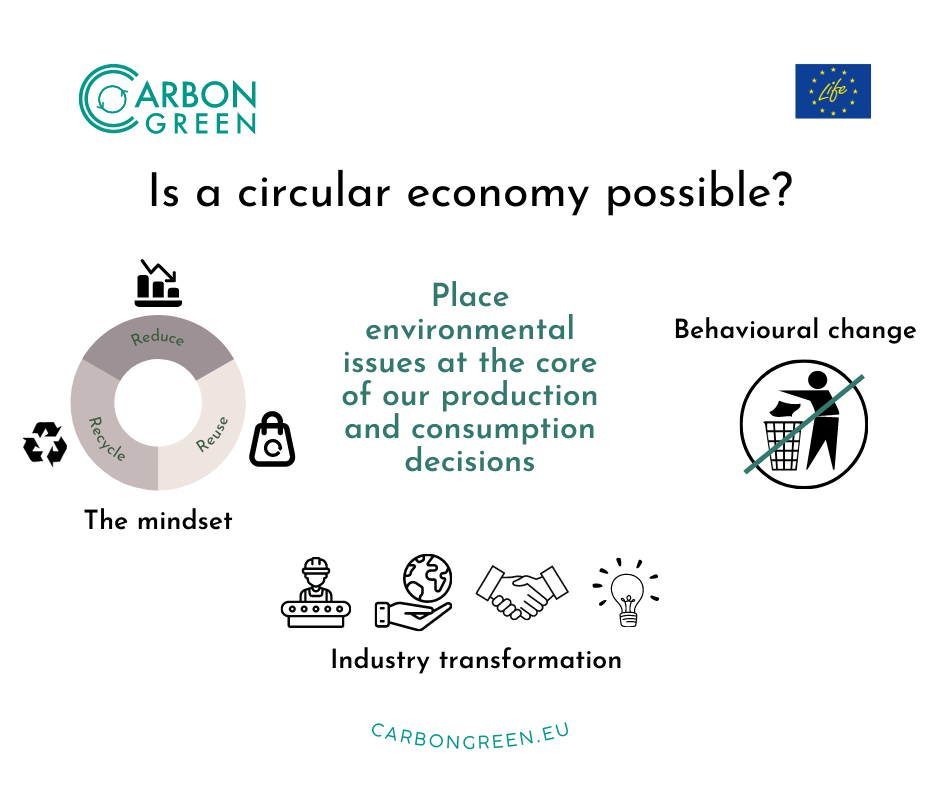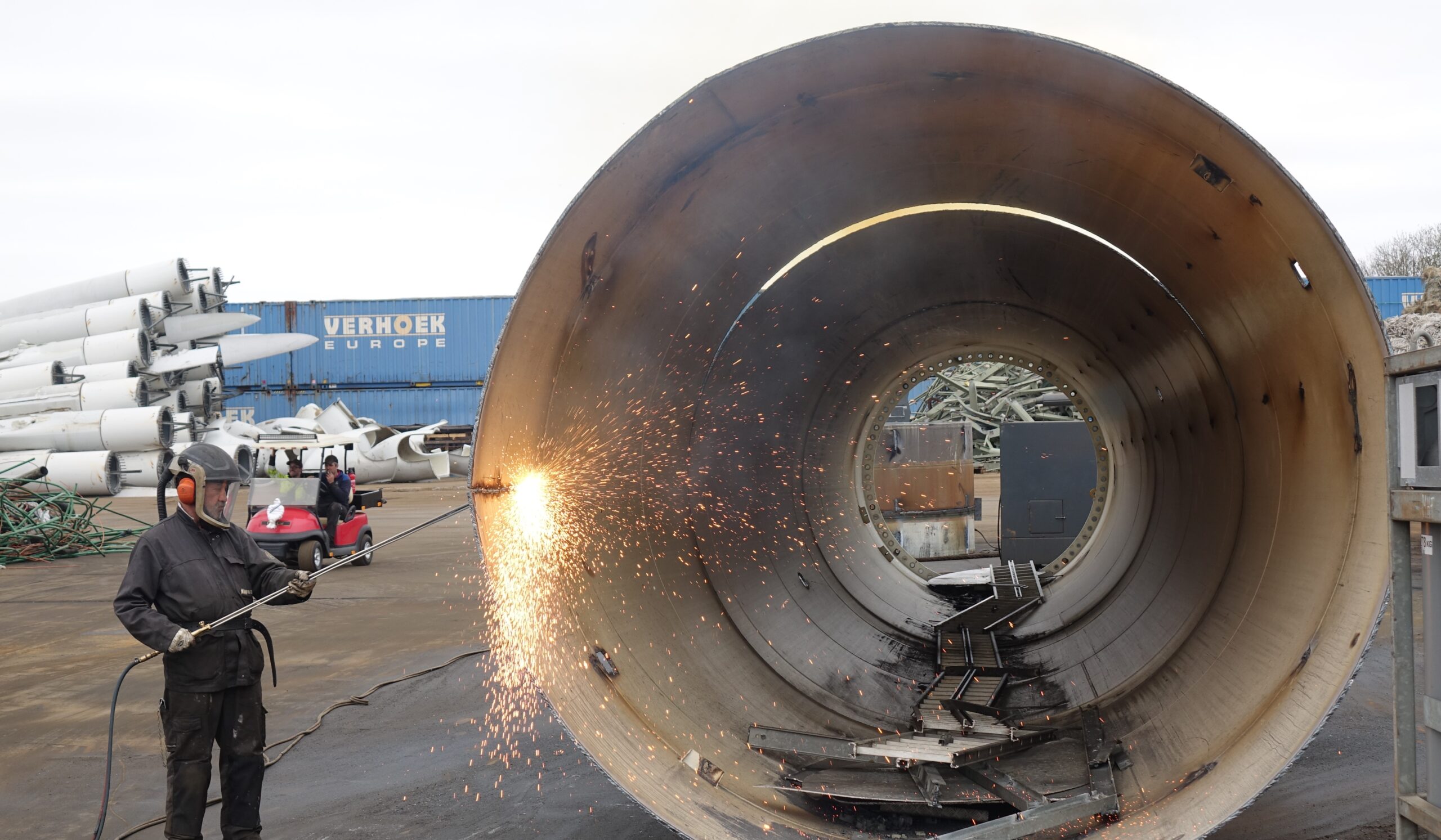A circular economy differs from a linear economy in several ways. Simply put, in a linear economy, we mine raw materials, turn them into products, use them, and finally discard them. Instead, in a circular economy, we close the cycles of all these raw resources. By definition, a circular economy is one that is restorative and regenerative by design, and which always aims to keep product components and materials at their highest utility and value [1]. Therefore, a circular economy can help to address the current global crises of climate change, biodiversity loss, need for raw materials and pollution. We can prevent producing greenhouse gases caused by the energy required to manufacture items by keeping resources inside the loop longer.
LIFE CarbonGreen fosters a circular economy; wind blades, are turned into new high value products at their end-of-life. This is important because by 2030 the accumulated amount of wind turbine blade waste is estimated to reach 300,000 tonnes. By 2050, between 200,000 to 370,000 tonnes of blade waste per year will be produced. The traditional pattern of take-make-use-dispose can no longer sustain our needs nor bring prosperous growth. With a global population of eight billion inhabitants, new approaches to satisfy demand need to be implemented.
Want to be part of this new approach? We are ready to take blade waste! Contact us at: jirka.rajme@blue-expert.com
[1] Ellen MacArthur Foundation. (2017). What is a Circular Economy? . Retrieved December 31, 2019, from https://www.ellenmacarthurfoundation.org/circular-economy/concept


